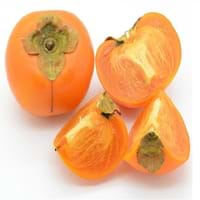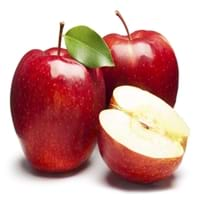Health Benefits
Cancer prevention, Heart care, Heat stroke treatment, Improves eye vision, Weight loss properties
Cancer prevention, Supports healthy Liver function, Diarrhea treatment, Heart care, Increases metabolic rate, Neutralizes irritable bowel syndrome, Helps Prevent cataract, Prevents constipation, Prevents gall stones, Prevents high blood pressure, Helps prevent Parkinson's disease, Reduces risk of asthma, Treatment of alzheimer's disease
General Benefits
Anti-inflammatory properties, Boosts immune system, Cures cough, Digestive aid, Fights against infections, Improves blood circulation
Boosts immune system, Helps in weight loss, Maintains healthy cholesterol level, Whitens teeth
Skin Benefits
Anti-aging benefits, Brightens and lightens complexion, Reduces wrinkles
Anti-aging benefits, Brightens and lightens complexion, Hydrates skin, Treatment of acne, Treatment of dark spots, Treatment of puffy eyes
Hair Benefits
Promotes longer and healthier hair, Protects hair
Prevents hair loss, Promotes longer and healthier hair, Regulates hair growth, Treatment of dandruff
Allergy Symptoms
Abdominal pains, Anaphylaxis, Inflammation
Abdominal pains, Itching, Swelling of mouth, tongue or lips, Vomiting
Side Effects
Diarrhoea, Might affect blood pressure level
Allergic reaction, May consist of poisonous seeds
Best Time to Eat
Along with meal, As a snack in the late afternoon, Don't consume at night and before bed, Morning time (before lunch)
Any time except an hour after meal, Best if taken as a breakfast (or empty stomach), Don't consume at night and before bed
Vitamin B5 (Pantothenic Acid)
Not Available
Vitamin C (Ascorbic Acid)
Vitamin K (Phyllochinone)
Calories in Fresh Fruit with Peel
Calories in Fresh Fruit without Peel
Not Available
Calories in Frozen Form
Not Available
Calories in Canned Form
Not Available
Type
Berry, Tree fruit
Tree fruit
Season
Autumn, Winter
All seasons
Varieties
Fuyu, Jiro, Gosho, Suruga, Hiratanenashi, Hachiya, Aizumishirazu, Yotsumizo, Yokono, Costata, Ormond and Tamopan
Red Delicious, Golden Delicious, Gala, Fuji, Granny Smith, Arkansas Black, Sampion, Pink Lady, Cameo, Jonagold, Mc Intosh, Ananasrenette, Lobo, Pacific Rose, Yellow transparent and Bramley
Color
Orange, Red, Yellow
Green, Red, Yellow
Inside Color
Orange
White
Taste
Sweet
Sweet, Sweet-Sour
Origin
Burma, China, India, Japan
Central Asia, Middle East Asia
Soil Type
Sandy loam, Well-drained
Loam
Climatic Conditions
Can tolerate wide range of climates
Cold
Facts about
- Unripe persimmons contain lots of tannin which is used to brew sake & to preserve wood in Japan.
- A small non-edible fruit of persimmon tree is crushed with water, the solution is painted on paper & used to repel mosquitoes.
- Apples can be as small as a pea and as big as a pumpkin.
- There are more than 8000 varieties of apples.
- Life of an Apple tree can be more than 100 years.
- Apples contain 25% air, therefore they float in water.
Spirits
Not Available
Yes
Cocktails
Not Available
Yes
Other Countries
Azerbaijan, Brazil, Israel, Italy, Japan, Pakistan
Chile, France, India, Iran, Italy, Poland, Russia, Turkey, United States of America
Top Importer
United States of America
Russia
Botanical Name
Diospyros kaki
Malus Domestica
Synonym
Not Available
Malus Communis or Malus Pumila or Pyrus Malus
Subkingdom
Tracheobionta
Tracheobionta
Division
Magnoliophyta
Magnoliophyta
Class
Magnoliopsida
Magnoliopsida
Subclass
Dillenhidae
Rosidae
Family
Ebenaceae
Rosaceae
Species
D. kaki
M. domestica
Generic Group
Not Available
Rose
Difference Between Japanese Persimmon and Apple
We might think that Japanese Persimmon and Apple are similar with respect to nutritional value and health benefits. But the nutrient content of both fruits is different. Japanese Persimmon and Apple Facts such as their taste, shape, color, and size are also distinct. The difference between Japanese Persimmon and Apple is explained here.
The amount of calories in 100 gm of fresh Japanese Persimmon and Apple with peel is 70.00 kcal and 52.00 kcal and the amount of calories without peel is Not Available and 48.00 kcal respectively. Thus, Japanese Persimmon and Apple belong to Low Calorie Fruits and Low Calorie Fruits category.These fruits might or might not differ with respect to their scientific classification. The order of Japanese Persimmon and Apple is Ericales and Rosales respectively. Japanese Persimmon belongs to Ebenaceae family and Apple belongs to Rosaceae family. Japanese Persimmon belongs to Diospyros genus of D. kaki species and Apple belongs to Malus genus of M. domestica species. Beings plants, both fruits belong to Plantae Kingdom.









